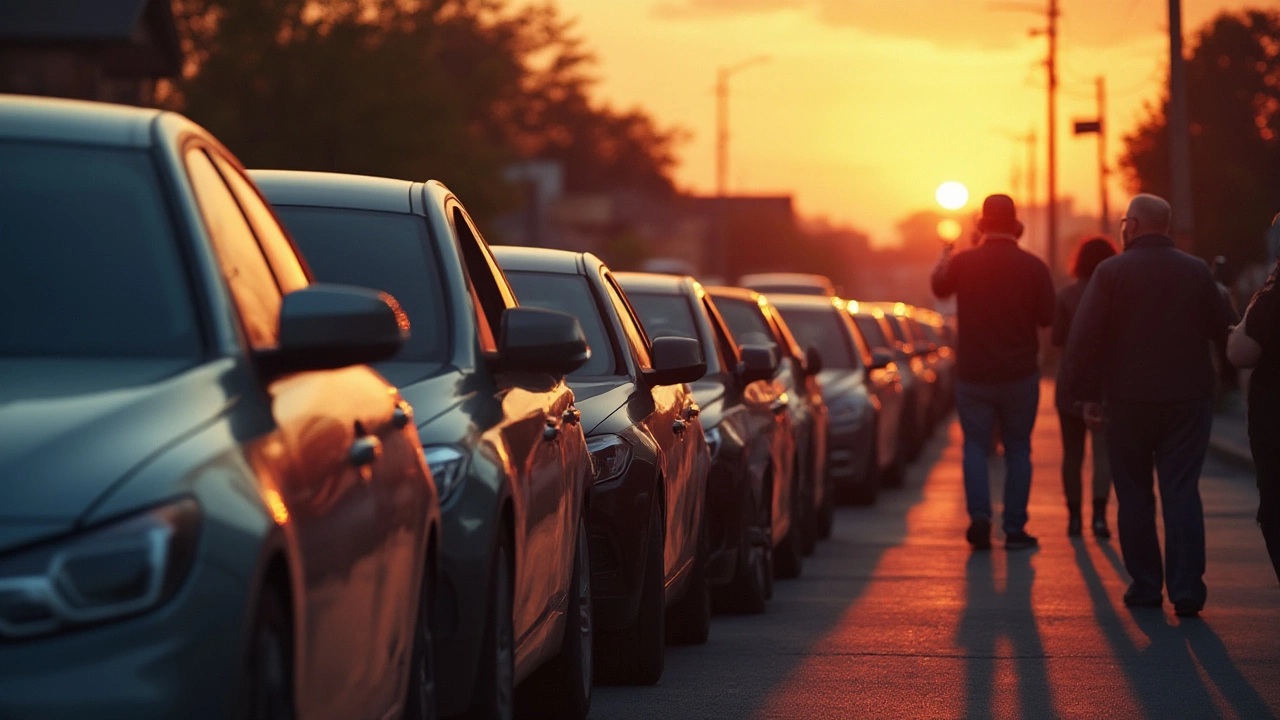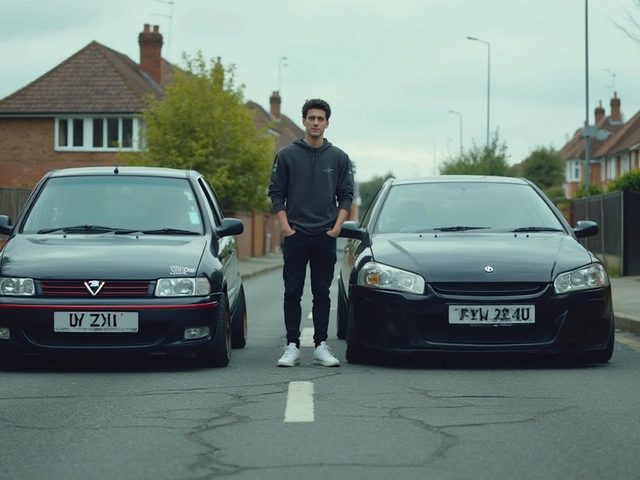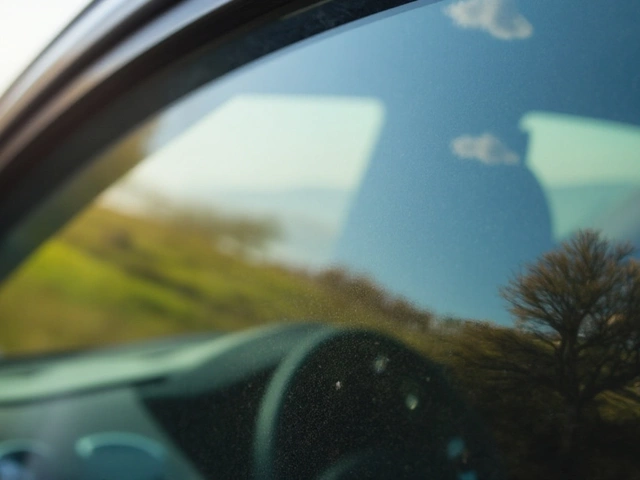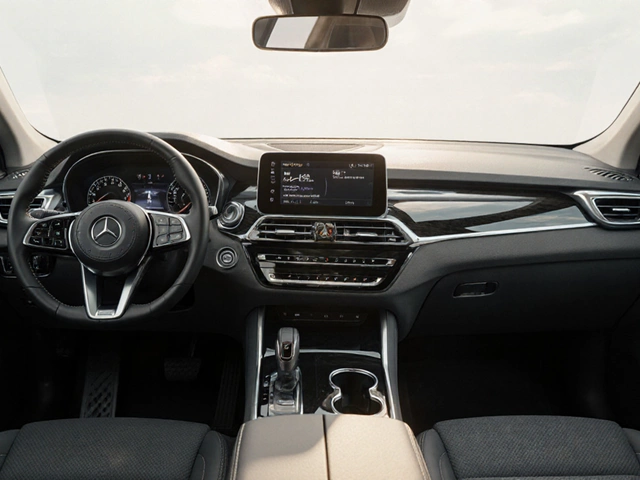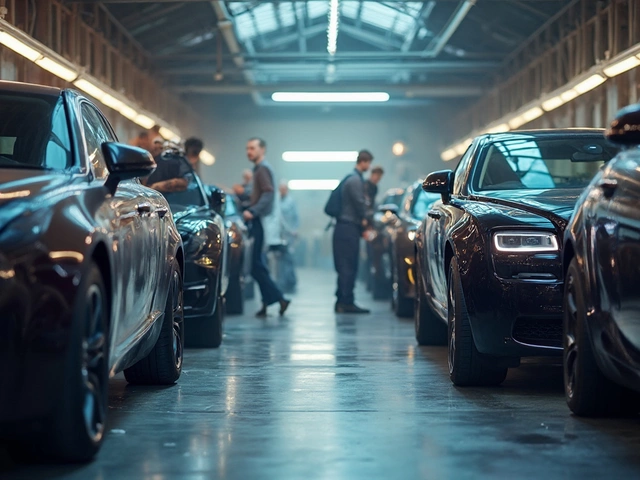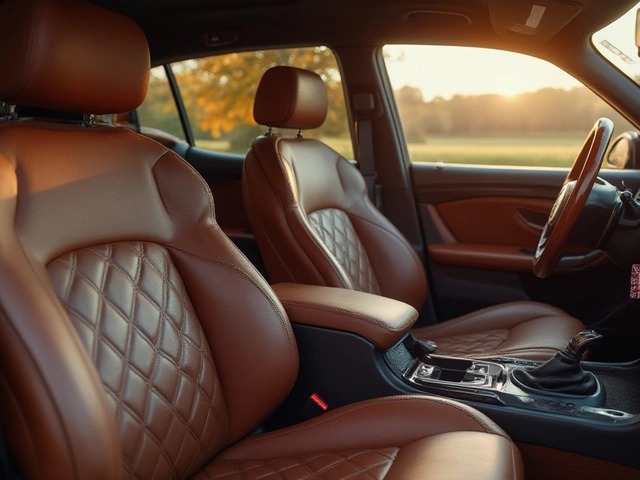If you’ve ever sat inside a car with pitch-black windows and wondered, “How on earth is this legal?” you’re definitely not alone. Window tint laws are a hot topic, and the rules across the United States are anything but consistent. Plenty of drivers want the privacy, UV protection, and style that comes with dark tints, but one slip-up and you might find yourself with a ticket instead of smooth sailing. So, which state actually draws the line darkest when it comes to legal window tint? Let’s tear into this question and see which state hands out the most shade—legally speaking.
Understanding Legal Window Tint: VLT and Why It Matters
Before diving into which state posts the strictest or most permissive laws, you’ve got to wrap your head around VLT—Visible Light Transmission. This is the percentage of visible light that gets through your car windows. In a nutshell, the lower the number, the darker the tint. Picture this: a window with 5% VLT is basically a celebrity tour bus—you can barely peek inside, while 70% is nearly invisible unless you look closely.
Most states have different rules for each window. The front side windows, rear side windows, rear window, and even windshields are often treated separately in the legal code. For example, you might see something like “Front: 35% VLT, Rear: Any”—which means you could go practically blacked-out in the back, but keep things lighter up front.
Why the difference? Safety comes first, at least in the eyes of law enforcement. Cops need to see who’s inside during a stop, and drivers need enough visibility to spot hazards. But there’s no national standard—all 50 states (plus D.C.) have carved out their own sets of regulations. That means a tint job that’s totally legit in Florida could roar into trouble in California, or vice versa. And you’d never guess which state lets drivers get away with the darkest windows.
The Darkest Tint Laws in the U.S.: Who’s the Winner?
Ask most people about the state with the darkest legal tint and you’ll get all kinds of answers—Texas, Nevada, maybe some wild-card guess like Alaska. But the oddball winner here is Limo Tint Nevada, where back side windows on certain vehicles can go as dark as you want—literally 0% VLT. That’s right: on multi-purpose vehicles (think SUVs), Nevada lets you block out all the light you’d like on those rear windows. Mississippi comes incredibly close, also allowing “any” tint darkness on rear windows.
But hold on—it gets complicated. On sedans, even in Nevada, you’re locked into a lighter limit (35% VLT on fronts and rears for cars). For trucks and vans, rear windows are fair game in more than a dozen states: Louisiana, North Carolina, Arkansas, and New Mexico all let you go full blackout, if you’re not driving a classic four-door sedan.
If we’re talking straight sedans, Wyoming and New Mexico permit rear side and back windows down to 20% VLT, which is plenty dark in most lighting. But Nevada and Mississippi still steal the spotlight—their rules open the door for the absolute darkest street-legal tints on select vehicle types.
The front windows? That’s where most states draw a firmer line. The darkest legal tint allowed on front side windows hovers around 24% to 25% VLT; Michigan allows non-reflective tint only on the upper 4 inches of the windshield, while states like Illinois force you to stick to 35% on the fronts. California is even stricter—rolling with 70% front-side window transparency. That’s nearly see-through, unless you know just where to look.
Bottom line: If you want face-meltingly dark tints, Nevada, Mississippi, and a few other southern states are your best bet—as long as you’re not driving a sedan, that is.
State-by-State Breakdown: How Tint Laws Actually Differ
Sifting through state laws is like decoding tax forms—nobody said it was easy. Still, a quick glance at a summary table gives you better odds than poring through legal lingo:
| State | Front Side VLT | Rear Side VLT | Back Window VLT | Notes |
|---|---|---|---|---|
| Nevada | 35% | Any (if SUV/MPV) | Any (if SUV/MPV) | "Any" means 0% possible on some vehicles |
| Mississippi | 28% | Any | Any | No restrictions on rear/backs |
| Louisiana | 40% | 25% (Any on MPV) | 12% (Any on MPV) | Trucks/vans can go darker |
| Texas | 25% | 25% | Any | Back unrestricted |
| California | 70% | Any | Any | Strict up front, generous in back |
| Alaska | 70% | 40% | 30% | Coldest state, high transparency required |
| Illinois | 35% | 35% | 35% | Uniform but strict |
| Delaware | 70% | 70% | 70% | Stricter than most |
The outliers are hard to miss. Some states like Florida have a modest 28% VLT limit on fronts and 15% for rears. Vermont, you ask? Only 32% on the fronts for cars, rear as dark as you want for SUVs. Then, there are states like Iowa and Indiana, enforcing lighter tints (70% fronts), while Arizona lets you dip to a spicy 33%.
But be careful with rankings—sometimes it’s not about strictness, it’s about flexibility. For example, states like Massachusetts or New York keep everything around 35%, no exceptions. You either play by the rules or risk a fine. Others are a little more chill for rear windows, especially for certain vehicle classes. The real wild west comes when you cross state lines—because a legal tint in Phoenix will get you pulled over in Denver without warning.
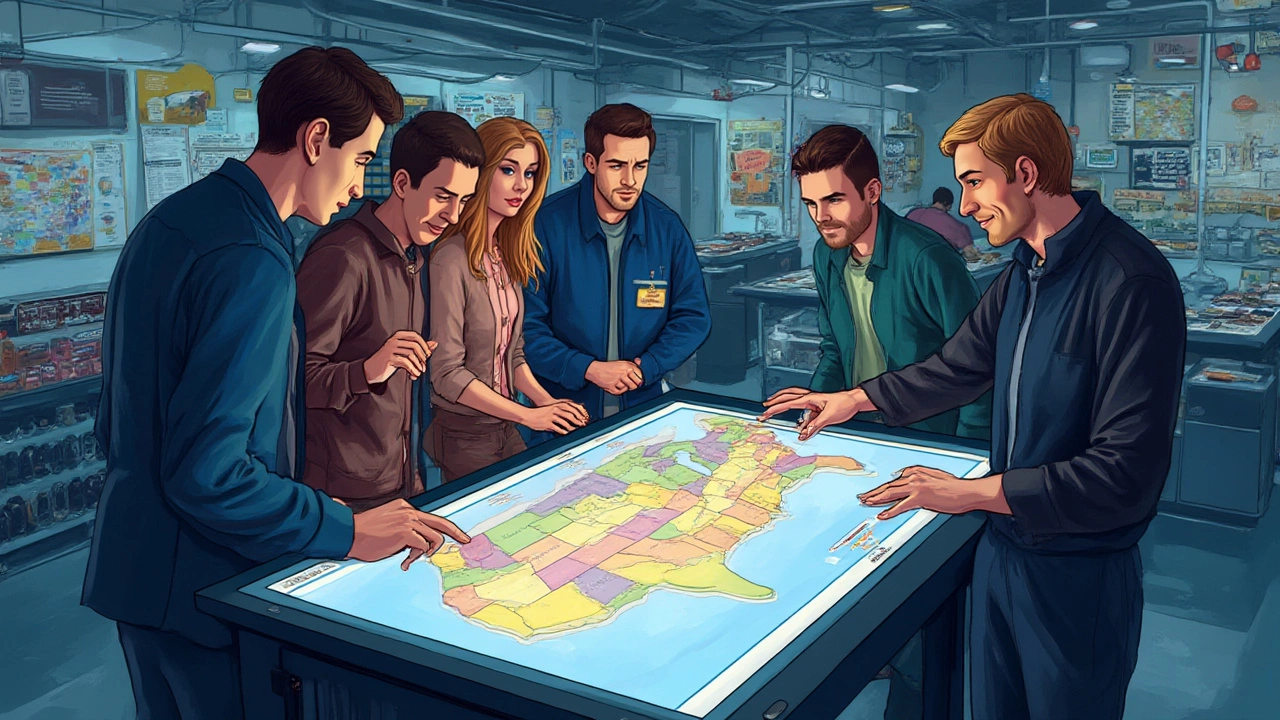
Why States Enforce Their Own Window Tint Rules
If you’re reading this in Brisbane like me, you might be scratching your head. Why all the variation? Most of it boils down to local climate, safety, and just a dash of old-school paranoia. States with lots of sun—think Nevada, Arizona, or Texas—tend to write more relaxed laws, knowing drivers need extra protection from UV rays and relentless heat. Darker tints mean less sunburn and less sun bleaching on your seats; nobody wants to slide into a blistering car after a day at the shops.
But there’s more to the story. Plenty of law enforcement officers want an easy look into vehicles for traffic stops—whether it’s for safety or more skeptical reasons, it’s a major sticking point. That’s why you’ll find states up north (looking at you, Alaska and Delaware) enforcing lighter tints, at least on the front side. The more transparency, the better the visibility during those icy winter days.
Insurance companies sometimes get into the mix, too. Some are more likely to deny coverage after an accident if your tint doesn’t follow the law. And if you get cited for illegal tint, that ticket can sit against your driving record, possibly raising your rates. Little surprises add up, fast.
Then there are health reasons. Many people swear by dark tints for controlling glare and preventing skin cancer, but a few states will let you skirt the regular limits if you have a physician-certified condition—like lupus or severe sun sensitivity. It’s not automatic, though; you’ll need the right paperwork and periodic renewal to keep rolling legally.
Tips for Navigating Tint Laws and Avoiding Legal Trouble
Got your heart set on ultra-dark windows? Here’s what every enthusiast—whether in the U.S. or Australia—should keep in mind before shelling out cash for a blackout package:
- Get your VLT checked before installation. Most quality tint shops use digital meters that give a quick and accurate reading. Don’t take a guess—know your percentages.
- Always ask if tint laws are different for your vehicle type. SUVs, vans, and trucks often have more generous rules than sedans. Don’t rely on what your neighbor’s sedan has slapped on.
- If you’re traveling across state lines (hello, American road trippers), be prepared. Cops only care about their own state laws, not your home state’s rulebook. Some savvy drivers keep a lighter backup window film for cross-state trips.
- Beware aftermarket “limo tint”—that phrase gets thrown around, but legal definitions are different everywhere. A so-called limo tint on a sedan will get you in trouble in Massachusetts but slide by in Mississippi if it’s on an SUV.
- If you have a medical exemption, keep all documentation in your glove box. Cops don’t want an argument—they want paperwork.
- Think about resale. Super-dark tints can put off some buyers, especially in states with strict rules or on vehicles meant to cross borders frequently.
- Maintenance matters. Over time, tint can bubble, fade, and peel, reducing transparency—the legal percentage might shift without you realizing it.
- If you’re a ride-sharing driver like Uber or Lyft, double-check local policies. Some companies restrict how dark your rear tints can be—even in lenient states.
Tint laws can get as nitpicky as which sticker you put on the inside of your windscreen. Some states require official state stickers denoting tint type and VLT level right on your glass. Miss it, and that’s another reason to pull you over. I once had a mate in Sydney stopped just because his sticker was peeling off the corner—hardly a safety risk, but the officer didn’t agree.
You’re also playing with fire if you overlap aftermarket tints—stacking two films can push your VLT well below the legal line. Always let the pros know if your glass is already tinted before adding more.
Interesting Facts and Stories: Life Behind the Darkest Tint
Think tint is just about privacy? Think again. The right tint blocks up to 99% of UVA and UVB rays, which is huge for skin protection and even for safeguarding your dog’s fur when he naps in the back seat. One study published in Car & Driver showed a 30-degree difference between untinted and high-reflectivity tinted cars left out on a sunny, 30°C day—got your attention yet?
A funny twist: some celebrities pay extra for removable, magnetic window tints that can be peeled off in states with harsh policies and snapped back in once they’re hitting the California hills. It’s James Bond stuff for people dodging the paparazzi—or just nosy neighbors.
If you get caught with an illegal tint, don’t panic. Most U.S. states issue a “fix-it ticket” which gives you a few weeks to remove the offending film and get your car re-checked. But fines run from $50 to $500 depending on where you are, and multiple offenses stack those penalties higher. And if you’re unlucky enough to get stopped in a stricter state, you might even lose points on your license.
- Window tinting has been steadily gaining popularity worldwide—not just for privacy, but as a badge of style and status. Some luxury cars even come with factory-made, legal dark tints so you can avoid modification headaches.
- You can save actual money with the right tints. One cool stat from an energy watchdog group showed that properly tinted car windows reduced air conditioning use by up to 20%, making road trips a whole lot more comfortable—and cheaper on fuel.
- Australia has its own quirks, by the way. Queensland, where I’m based, sets legal VLT at 35% for all sides except the windshield, just like Illinois and much of the U.S. If you drive north to the Territories, though, the rules get looser and locals embrace that classic, near-black look.
- I’ve had more than a few chats with tint aficionados who swear their kids sleep better in rear-facing car seats with heavy tints. For families worried about sun glare, that’s one extra reason to check local regulations carefully.
Remember, window tint isn’t just a style statement—it’s a patchwork of safety, personal preference, and (sometimes) plain odd state politics. You’ve got to keep your ear to the ground and your paperwork tidy. Whether you’re chasing the ultimate in privacy or just want to make the summer drive bearable, knowing what’s legal—from Nevada’s blackout policies to Delaware’s “see-through only” vibe—will always keep you rolling without the drama.

